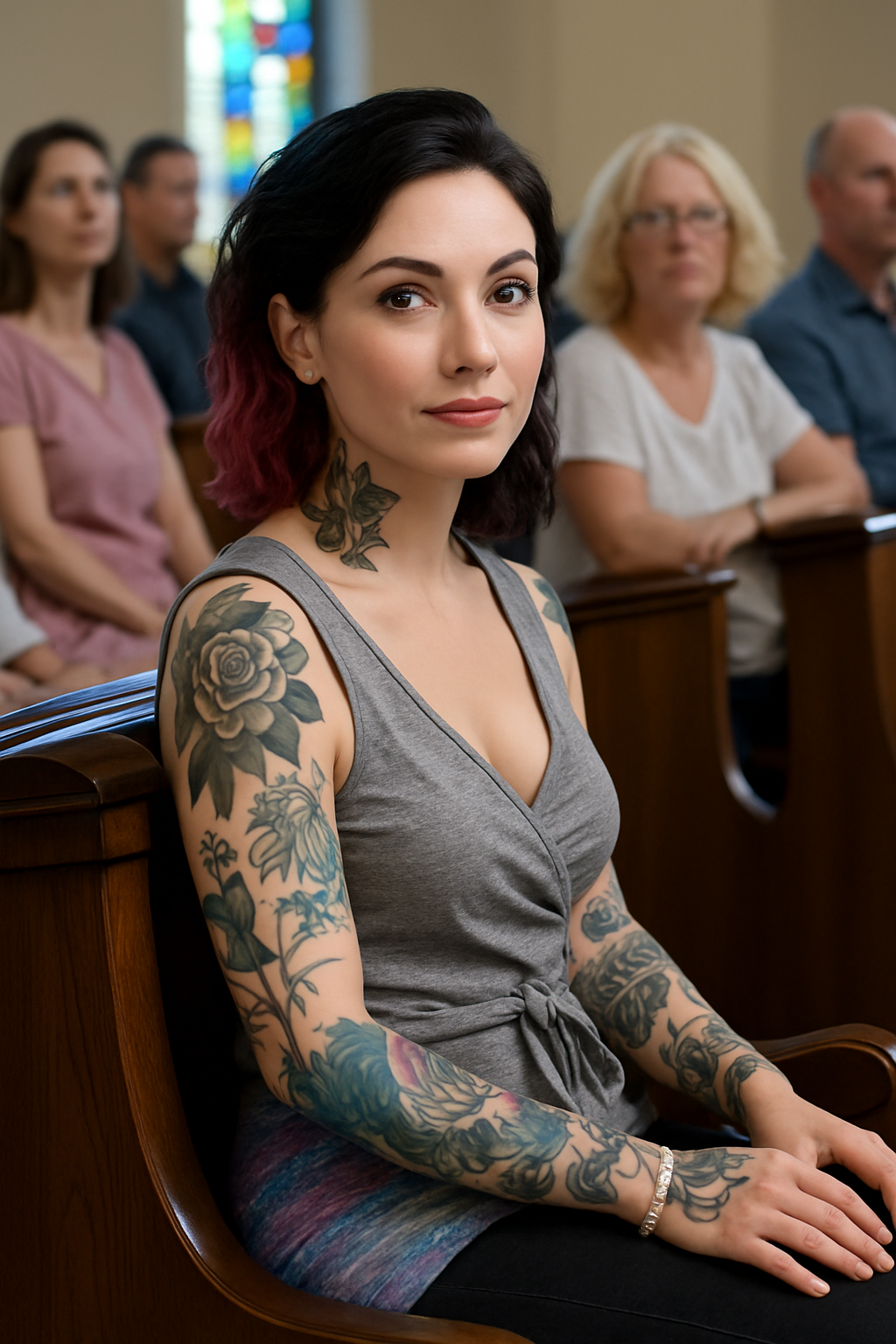Church Encounter: When Her Appearance Made Me Rethink Everything

A Sunday Surprise
Last Sunday, I walked into the sanctuary expecting the usual sense of quiet reverence. But the moment I stepped in, I saw her—a woman in her forties, her arms marked with tattoos, silver glinting from more than a few piercings.
Growing up, I was always taught that church was a sacred place, where modest clothing showed respect. Her bold look stood out so much that it made me pause. Was this really “appropriate” for a place of worship, or was I holding on too tightly to old ideas?
Confronting My Own Beliefs
Throughout the service, my thoughts kept circling back to her. Afterward, I gently mentioned that maybe her appearance was a little too striking for church, suggesting a more subdued style.
Her answer was short but powerful:
“How I look has nothing to do with you.”
Her words stayed with me. I realized the discomfort I felt wasn’t about her at all—it was about me. Maybe my unease came from long-standing traditions I grew up with, not from anything truly wrong with how she dressed.
The Question of Church Attire

For generations, many of us carried a picture of what “proper” church attire should be: neat dresses, suits, ties, nothing flashy. These unspoken rules created a sense of order and reverence.
But times have changed. Tattoos, piercings, and personal style have become normal ways of expressing who we are. So should there still be one standard?
Some see modest clothing as a way to honor the sacredness of the space. Others believe faith has little to do with outward appearance. If the heart is sincere, does it really matter what someone is wearing?
Looking Beyond Appearances
Church, at its core, is about unity and belonging. When we focus too much on how someone looks, we risk missing the deeper purpose—drawing closer to God and to each other.
Every tattoo, every piercing, every bold outfit may carry a story: of pain, of healing, of identity, of survival. By judging too quickly, we close the door to understanding the lives and journeys behind those choices.
Balancing Respect and Expression
That doesn’t mean tradition holds no value. For some, covering tattoos or dressing modestly is a way to honor their upbringing, a gesture of respect that feels deeply meaningful.
But faith is also personal. Each person’s connection with God is unique, and the way they express themselves—whether through clothing or body art—is part of that journey. The challenge is finding balance: respecting the space while honoring individuality.
Building a Culture of Respect
Maybe the answer isn’t in strict dress codes, but in mutual respect. Churches could encourage thoughtful attire that honors both personal expression and the sacredness of the place.
Instead of rules that exclude, we can foster understanding. A church that welcomes difference while upholding respect becomes a place where everyone feels safe to belong.
An Open-Hearted Faith
At the center of faith lies inclusion. Jesus welcomed those whom society often pushed aside. If we truly want to reflect those values, we must learn to look past appearances.
Whether someone comes in covered with tattoos, dressed casually, or in their finest suit, what matters most is the heart—the desire to connect with God and community.
When we embrace diversity in our places of worship, we create not only a more welcoming church but also a deeper reflection of grace itself.